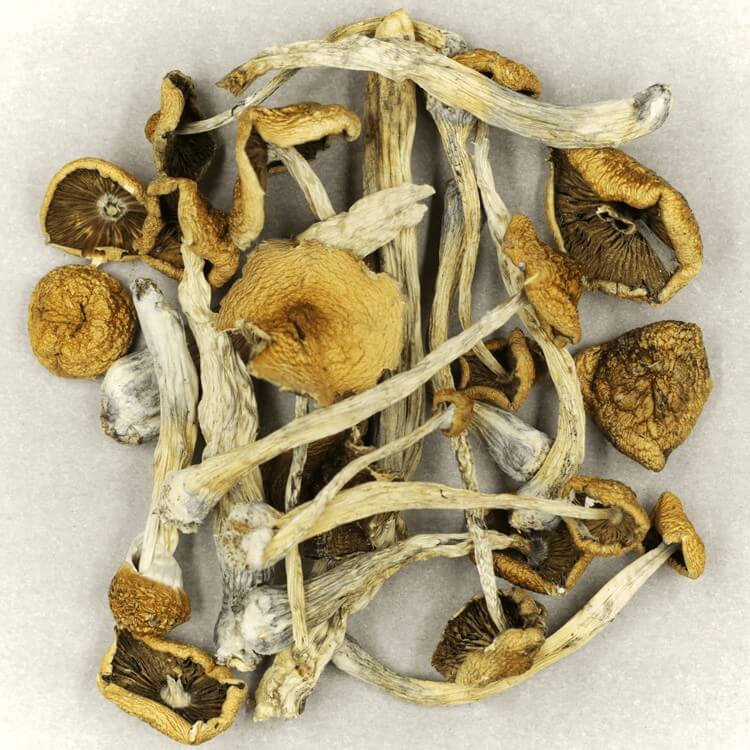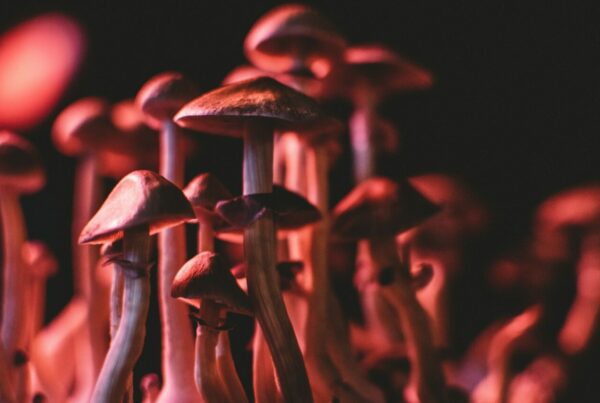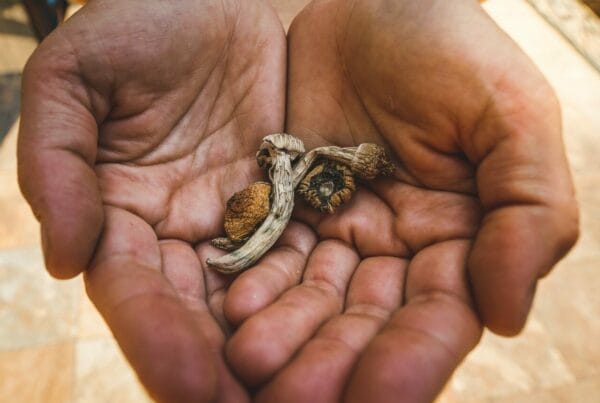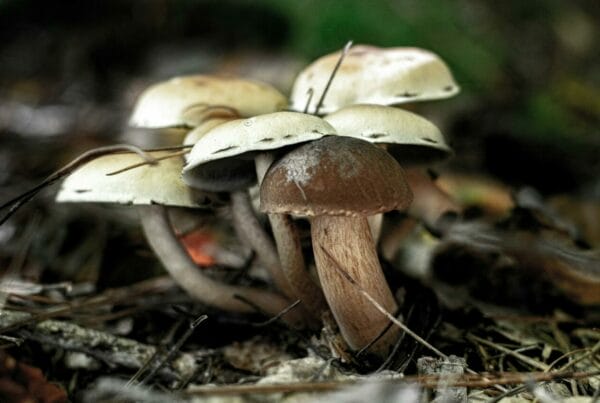Once thought to be purely fantastical, the strength of Psilocybe mexicana is now being recognized due to advancements in psilocybin research. The psychedelic research field is steadily unearthing its therapeutic advantages, progressively leading to its acceptance in the medical community. This burgeoning field is viewed as promising by experts who continue to work towards determining safe dosage levels for medical purposes.
Key Takeaways
- Modern techniques, such as liquid chromatography and tandem mass spectrometry, are being utilized by researchers to establish the potency of mushrooms.
- Clinical trials are studying Psilocybe Mexicana, among other mushroom varieties, to evaluate its possible therapeutic applications.
- The genetic diversity of magic mushrooms plays a crucial role in formulating an accurate dosage guideline.
Psychedelic Mushrooms: The Journey from Obscurity to Scientific Breakthroughs
In the past, only a small number of conditions were known to benefit from Psilocybe Cubensis. However, today, psilocybin is making considerable advances in revealing its hidden therapeutic benefits.
The potential of Psilocybe Mexicana, along with other potent strains, is being harnessed by experts for clinical trials and comprehensive research. Regardless of whether the subjects are in vivo or in vitro, this strain effectively showcases the true effects and benefits of the fungus species.
Psychedelics: A New Player in the Market
Once veiled, now unveiled—the steady progress and discoveries are increasingly drawing public attention, especially those seeking therapeutic resolutions. Conventional mental health treatments often fail to deliver, leading individuals to search for more dependable alternatives.
The solution? Magic mushrooms.
People with mental health disorders are resorting to psilocybin, which shows potential in treating conditions like depression, alcohol dependence, anxiety, compulsions, tics, chronic pain, and beyond.
Currently, medical professionals are investigating novel methods to accurately discern the ideal dosage for safe patient administration. Notably, a research team from the University of Texas has devised a model to extract psilocybin and psilocin concentrations.
The potency of magic mushrooms can indeed be clinically determined.
Distinctive Traits of Mexicana
Golden Teachers, Blue Meanies, and B-Plus are among the most extensively studied magic mushrooms. For a more comprehensive understanding of safe magic mushroom consumption, it is necessary for researchers to investigate other species.
The Mexicana species is increasingly being chosen for research due to its age-old existence and relatively low potency. This low potency increases the probability of it meeting medical drug standards.
Despite the Mexicana strain’s low intensity compared to its counterparts, it can still yield similar effects. Given the rising popularity of microdosing among patients, this strain is becoming a favored choice.
With psilocybin and psilocin levels comparable to other strains, one may wonder why opt for the Mexicana strain. The answer lies in its unique historical and anthropological significance.
Diving Into A Rich “Mexican” Past
Historically, psilocybe mexicana grew naturally in moss, and indigenous people held these psilocybin mushrooms in high esteem due to their varied uses, often linked to mystical or supernatural phenomena.
Now, let’s turn our focus to Mexican mushrooms. These mushrooms were first used over 2000 years ago by the native people of North and Central America. The ancient Aztecs, referred to these mushrooms as the “food for the Gods,” or “teonanácatl” in their native tongue.
The Aztecs, if present today, would attest to the transformative, emotionally potent, and mentally stabilizing effects of the Mexicana strain—even without familiarity with these modern terms.
Despite varying cultivation techniques, this mushroom has preserved its natural psilocybin concentrations, showcasing its authenticity. This authenticity is a benchmark that both researchers and psychedelic research institutions highly appreciate.
Innovative Methods for Testing Psilocybin Content and Potency
A team of ten researchers from the University of Texas at Arlington and other research institutions have designed a novel method for testing the potency of psychoactive compounds in mushrooms. This cutting-edge technique combines liquid chromatography and tandem mass spectrometry.
Here are two pioneering methods:
- Liquid chromatography is a technique used to separate and analyze chemical mixtures, including active chemicals in mushrooms. The technique involves passing a liquid sample through a column filled with a solid material, known as the stationary phase. The various chemicals in the sample interact differently with the stationary and mobile phases, resulting in their separation at different rates as they traverse the column.
- Spectrometry typically involves studying the interaction of matter with electromagnetic radiation at different wavelengths. This technique can identify and measure substances based on the specific wavelengths of light that their molecules absorb or scatter, thereby enabling the determination of the electronic, vibrational, and rotational states of the chemical.
This methodology was utilized on five strains of magic mushrooms. The scientists found that the average total psilocybin and psilocin levels in these strains ranged from 0.879 to 1.36, surpassing many other varieties like Bull Run and Cambodian. The accuracy of their study was confirmed by comparing their results with data from other independent laboratories.
The congruence of results from both laboratories further confirmed the reliability of their testing procedure in accurately determining the potency of the mushrooms.
If endorsed by experts, this could introduce a new array of techniques to the existing array of psychedelic strength testing methods, serving as an extra safeguard to avoid unsafe dosage determinations.
Extension of Research to Other Species
Widening the scope of research to encompass other species could be beneficial. It could improve our knowledge of the health benefits of different strains and provide baseline data on the effects of less potent mushrooms.
Moreover, it could help educate individuals about the influence of different dosages on the psychedelic experience. By comparing the Mexican strain with more potent strains like Psilocybe Cubensis, researchers can ascertain how different concentrations of active compounds can affect therapeutic outcomes.
For instance, the Blue Meanies strain is known for its potent hallucinogenic effects which could potentially be effective in treating conditions like depression. On the other hand, strains with lower potency are more suitable for microdosing or more subtle uses such as mood enhancement or focus improvement.
Genetic Diversity Leads to Safer Treatments
It’s not widely known that different cultivars or varieties each have unique genetic profiles and
Different types of hallucinogenic mushrooms have varying strengths, chemical compositions, and effects. This diversity allows healthcare experts to select the most suitable kind for specific medicinal purposes and adjust doses to cater to unique patient requirements. This personalized approach enhances the therapeutic benefits and reduces potential risks.
For instance, take a look at Psilocybe Semilanceata (Liberty Caps) or Psilocybe cyanescens. These strains have distinct alkaloid profiles that could potentially alleviate anxiety. On the other hand, certain artificially grown mushrooms might be more effective for addressing substance addiction or compulsive behavior. This variety paves the way for the development of customized treatments that are both safer and more productive.
It’s evident that the genetic diversity in hallucinogenic mushrooms, in conjunction with advanced techniques for potency evaluation and identification, is key to formulating safer medicinal treatments.
Enhancing Safety in Medicinal Applications
Let’s contemplate the potential benefits of more secure dosing practices.
- Decreased overdosing incidents: Accurate dosing eliminates concerns about overdosing. This also suggests that product labels should be clearer to avoid consumer misunderstanding.
- Increased predictability: With precise dosing, individuals can better predict their experiences during the trips. This could reduce overwhelming feelings and anxiety, resulting in heightened patient satisfaction.
- Uniform measurement: Accurate dosing could encourage a standardized measure, making it easier for individuals to refer to charts for possible effects.
Reap the Benefits of Accurately Dosed Shrooms with Innovative Potency Tests | Buy Magic Mushrooms Online at Shrooms For Sale Canada
If these two advanced techniques continue, you will no longer encounter unpredictable effects. Pair this with smart online shopping at Shrooms For Sale Canada. We offer dried mushrooms that provide a serene, tranquil psychedelic journey without excessive psychoactivity. Buy psychedelics online in Canada via Shrooms For Sale Canada.
Frequently Asked Questions
Do Big Mexicans and Psilocybe Cubensis refer to the same strain?
No, Big Mexicans and Psilocybe Cubensis are different mushroom strains, so it’s crucial not to confuse them. Big Mexicans have a higher compound concentration, ranging from 0.5% to 1%, making them significantly more potent.
Psilocybe Cubensis and Psilocybe Mexicana differ not only in potency but also in appearance. Psilocybe Mexicana usually has a bell-shaped cap, whereas Psilocybe Cubensis generally sports a conical shape.
How concentrated are Mexican mushrooms?
The concentrations of psilocybin and psilocin in Mexican mushrooms can peak at 0.25%. Although these concentrations are relatively low, comparable to the Golden Teacher strain, they are capable of inducing profound psychedelic experiences, which may impart health benefits.
What is the recommended dosage for safety?
The advised dose typically falls between 1 and 2 grams. However, this recommendation can fluctuate according to factors such as the method of intake, individual metabolic rates, and the specific strength of the strain. Some individuals opt for sub-threshold doses, ranging from 0.05 (50mg) to 0.025 grams (250mg), to minimize the hallucinogenic effects.





